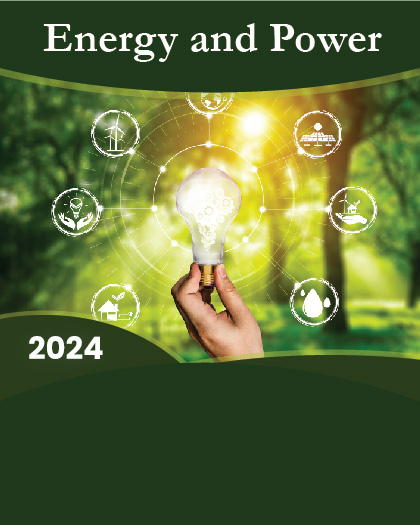1. Preface
1.1. Objectives of the Study
1.2. Market Segmentation & Coverage
1.3. Years Considered for the Study
1.4. Currency & Pricing
1.5. Language
1.6. Stakeholders
2. Research & Forecasting
2.1. Research Methodology
2.1.1. Research Process
2.1.2. Research Framework
2.1.3. Research Reliability & Validity
2.1.4. Research Assumptions
2.2. Forecasting Methodology
3. Executive Summary
3.1. Market Outlook
3.2. Market Data Feed
4. Premium Insight
4.1. Market Connectivity
4.2. Market Dynamics
4.2.1. Drivers
4.2.2. Restraints
4.2.3. Opportunities
4.2.4. Challenges
4.3. Porters Five Forces Analysis
4.3.1. Threat of New Entrants
4.3.2. Threat of Substitutes
4.3.3. Bargaining Power of Customers
4.3.4. Bargaining Power of Suppliers
4.3.5. Industry Rivalry
4.4. Client Customizations
5. Global Environmental Monitoring Market, by Type
5.1. Overview
5.2. Market Sizing & Forecasting
5.3. Active Monitoring
5.4. Continuous Monitoring
5.5. Intermittent Monitoring
5.6. Passive Monitoring
6. Global Environmental Monitoring Market, by Product
6.1. Overview
6.2. Market Sizing & Forecasting
6.3. Monitors
6.4. Sensors
6.5. Software
7. Global Environmental Monitoring Market, by Application
7.1. Overview
7.2. Market Sizing & Forecasting
7.3. Air Pollution Monitoring
7.4. Noise Pollution Monitoring
7.5. Soil Pollution Monitoring
7.6. Water Pollution Monitoring
8. Global Environmental Monitoring Market, by End-User
8.1. Overview
8.2. Market Sizing & Forecasting
8.3. Construction
8.4. Data Centers
8.5. Food & Beverage
8.6. Government
8.7. Medical
8.8. Retail
9. Global Environmental Monitoring Market, by Geography
9.1. Overview
9.2. Market Sizing & Forecasting
9.3. Americas
9.3.1. Argentina
9.3.2. Brazil
9.3.3. Canada
9.3.4. Chile
9.3.5. Mexico
9.3.6. United States
9.4. Asia-Pacific
9.4.1. Australia
9.4.2. China
9.4.3. India
9.4.4. Indonesia
9.4.5. Japan
9.4.6. Malaysia
9.4.7. Philippines
9.4.8. South Korea
9.4.9. Thailand
9.5. Europe, Middle East & Africa
9.5.1. Denmark
9.5.2. France
9.5.3. Germany
9.5.4. Italy
9.5.5. Netherlands
9.5.6. Qatar
9.5.7. Russia
9.5.8. Saudi Arabia
9.5.9. South Africa
9.5.10. Spain
9.5.11. United Arab Emirates
9.5.12. United Kingdom
10. Competitive Landscape
10.1. FPNV Positioning Matrix
10.1.1. Quadrants
10.1.1.1. Forefront
10.1.1.2. Pathfinders
10.1.1.3. Niche
10.1.1.4. Vital
10.1.2. Business Strategy
10.1.2.1. Business Growth
10.1.2.2. Industry Coverage
10.1.2.3. Financial Viability
10.1.2.4. Channel Support
10.1.3. Product Satisfaction
10.1.3.1. Value for Money
10.1.3.2. Ease of Use
10.1.3.3. Product Features
10.1.3.4. Customer Support
10.2. Market Vendor Ranking Analysis
10.3. Competitive News Feed Analysis
11. Company Usability Profiles
11.1. Danaher Corporation
11.1.1. Overview
11.1.2. Strategy
11.1.3. SWOT
11.2. E.S.I. Environment Sensors Inc.
11.2.1. Overview
11.2.2. Strategy
11.2.3. SWOT
11.3. TE Connectivity Ltd.
11.3.1. Overview
11.3.2. Strategy
11.3.3. SWOT
11.4. Thales Group
11.4.1. Overview
11.4.2. Strategy
11.4.3. SWOT
11.5. The Raytheon Company
11.5.1. Overview
11.5.2. Strategy
11.5.3. SWOT
11.6. Agilent Technologies, Inc.
11.7. Ball Aerospace
11.8. Honeywell International, Inc.
11.9. Lockheed Martin Corporation
11.10. Siemens AG
12. Appendix
12.1. Discussion Guide
12.2. Additional Competitive News Feed
12.3. Competitive Strategic Window
12.3.1. Leverage Zone
12.3.2. Vantage Zone
12.3.3. Speculative Zone
12.3.4. Bottleneck Zone
12.4. Top Reports
12.4.1. Global Crane Rental Market
12.4.2. Global Computer Vision Market
12.4.3. Global Payment Gateway Market
12.4.4. Global B2B Travel Market
12.4.5. Global Varicose Vein Treatment Devices Market
12.5. Author Details























